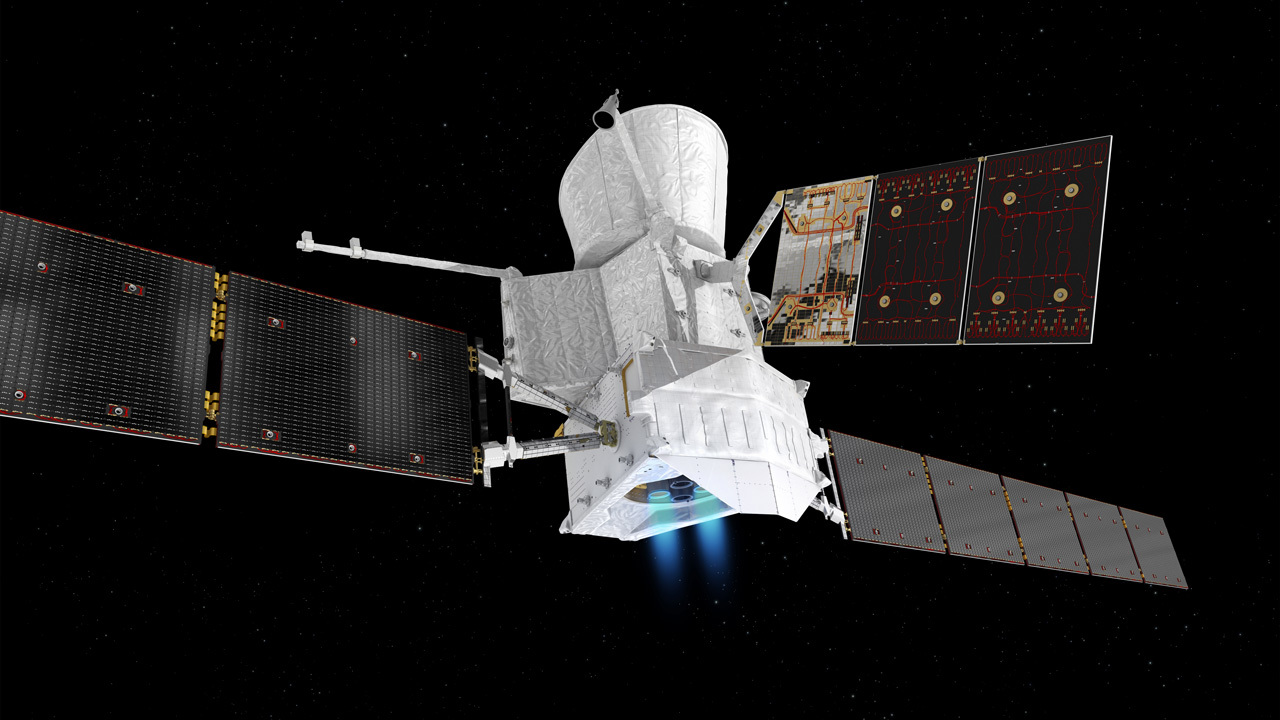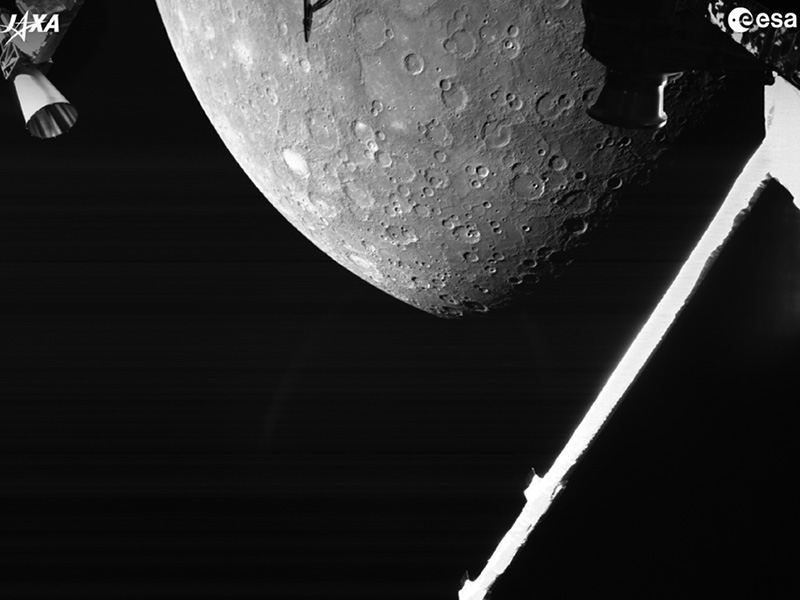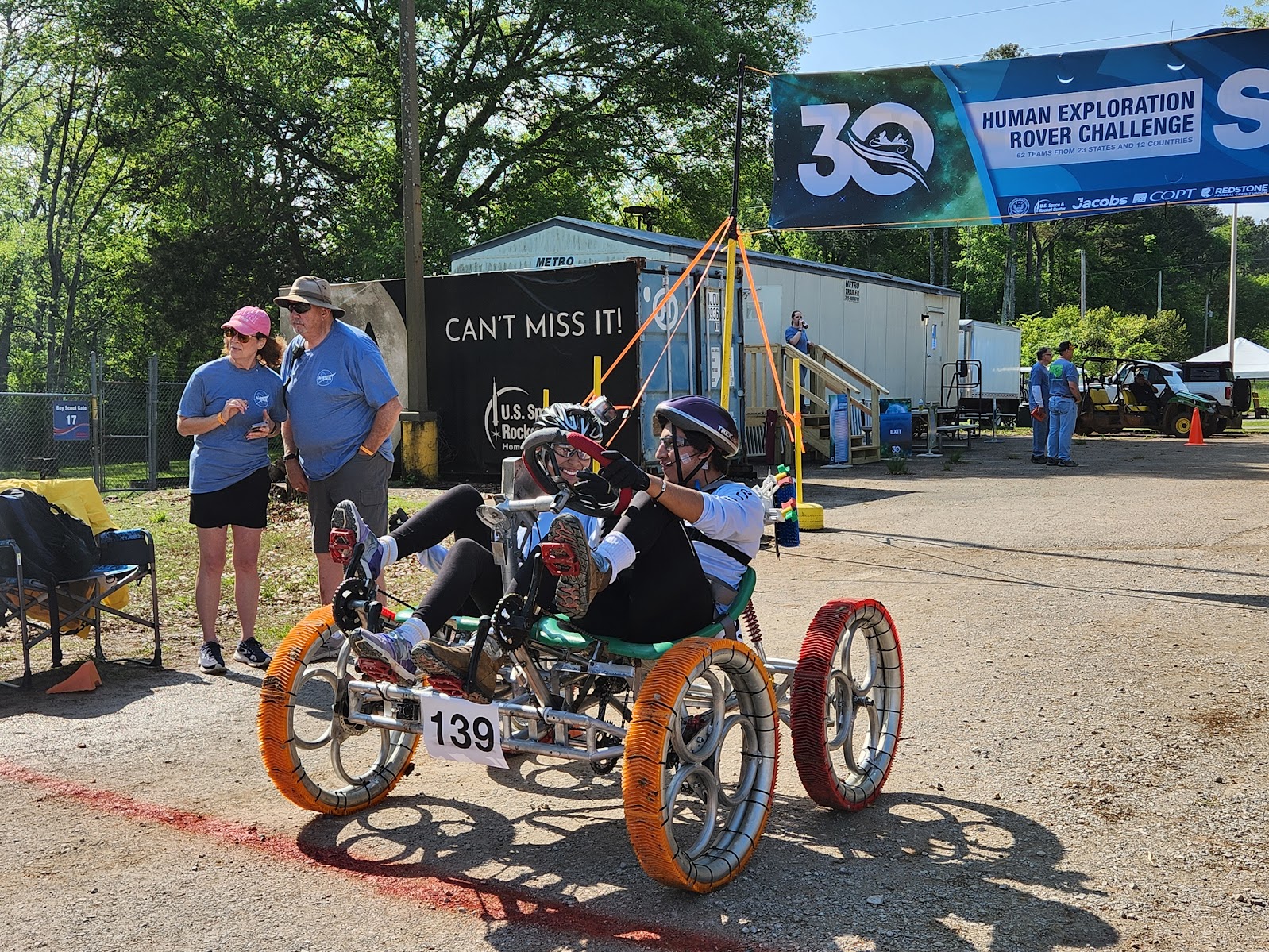BepiColombo


What is BepiColombo?
BepiColombo is an international mission comprised of two spacecraft riding together to Mercury to orbit and to study the planet from unique vantage points. The European Space Agency (ESA) provided one orbiter. The Japan Aerospace Exploration Agency (JAXA) supplied the second orbiter.
- BepiColombo launched in October 2018 and is scheduled to begin orbiting Mercury in 2025.
- ESA's Mercury Planetary Orbiter (MPO) will study the planet's surface and interior.
- JAXA's Mercury Magnetospheric Orbiter (MIO) will study the planet's magnetic field.
- These are the first Mercury missions for the ESA and Japan. Only two other spacecraft have visited Mercury: NASA's Mariner 10 and MESSENGER.
Nation | Europe and Japan |
Objective(s) | Mercury Orbit |
Spacecraft | BepiColombo |
Spacecraft Mass | 9,040 pounds (4,100 kilograms) |
Mission Design and Management | ESA and JAXA |
Launch Vehicle | Ariane 5 |
Launch Date and Time | Oct. 20, 2018 | 01:45:28 UT |
Launch Site | Guiana Space Centre, Kourou, French Guiana |
Scientific Instruments | Mercury Planetary Orbiter (MPO): 2,540 pounds (1,150 kilograms) 1. BELA–BepiColombo Laser Altimeter 2. ISA–Italian Spring Accelerometer 3. MPO-MAG–Magnetic Field Investigation 4. MERTIS–Mercury Radiometer and Thermal Imaging Spectrometer 5. MGNS–Mercury Gamma-Ray and Neutron Spectrometer 6. MIXS–Mercury Imaging X-ray Spectrometer 7. MORE–Mercury Orbiter Radio Science Experiment 8. PHEBUS–Probing of Hermean Exosphere by Ultraviolet Spectroscopy 9. SERENA–Search for Exosphere Refilling and Emitted Neutral Abundances (neutral and ionized particle analyzer) 10. SIMBIO-SYS–Spectrometers and Imagers for MPO BepiColombo Integrated Observatory 11. SIXS–Solar Intensity X-ray and Particle Spectrometer Mercury Magnetospheric Orbiter (MMO): 606 pounds (275 kilograms): 1. MMO-MGF–Mercury Magnetometer 2. MPPE–Mercury Plasma Particle Experiment 3. PWI–Mercury Plasma Wave Instrument 4. MSASI–Mercury Sodium Atmospheric Spectral Imager 5. MDM–Mercury Dust Monitor |
Key Dates
Oct. 20, 2018 | 01:45:28 UT: Launch
April 13, 2020: Earth flyby
Oct. 16, 2020: Venus flyby
Aug. 11, 2020: Venus Flyby
Oct. 1, 2021: First Mercury flyby
June 23, 2022: Mercury flyby
June 20, 2023: Mercury flyby
Sept. 5, 2024: Mercury flyby
Dec. 2, 2024: Mercury flyby
Jan. 9, 2025: Mercury flyby
Dec. 5, 2025: Mercury orbital insertion
Firsts
- ESA's first mission to Mercury
- JAXA's first mission to Mercury
- First mission to Mercury comprised of two orbiters

In Depth: BepiColombo
BepiColombo is a joint European-Japanese mission to Mercury to study the planet's composition, geophysics, atmosphere, magnetosphere, and history.
The European Space Agency (ESA) and the Japan Aerospace Exploration Agency (JAXA) each have an orbiter on the same spacecraft.
ESA built the main spacecraft, the Mercury Planetary Orbiter (MPO), and JAXA supplied the Mercury Magnetospheric Orbiter (MIO).
MPO will study the surface and internal composition of the planet, and MIO will study Mercury's magnetosphere – the region of space around the planet that is dominated by its magnetic field.
BepiColombo made its first flyby of Mercury on Oct. 1, 2021, and sent back several images. Several more planetary flybys will be used to steer BepiColombo into orbit around Mercury in December 2025.
A few months before going into orbit, BepiColombo will jettison the spacecraft's transfer module leaving the two orbiters – still connected to each other – to be captured by Mercury's gravity.
Both orbiters are expected to operate for about one year.
BepiColombo is only the third spacecraft to visit Mercury. NASA's Mariner 10 flew past Mercury three times in 1974-1975 and returned the first close-up images of the planet.
NASA's MESSENGER orbited Mercury for more than four years from Aug. 3, 2004, to April 30, 2015. The mission determined Mercury’s surface composition, revealed its geological history, discovered details about its internal magnetic field, and verified its polar deposits are dominantly water-ice. The mission ended when MESSENGER ran out of fuel and slammed into Mercury’s surface.
BepiColombo is named after Professor Giuseppe (Bepi) Colombo (1920-1984) from the University of Padua, Italy, a mathematician and engineer. He was the first to determine that an unsuspected resonance is responsible for Mercury's habit of rotating on its axis three times for every two revolutions it makes around the Sun.







